
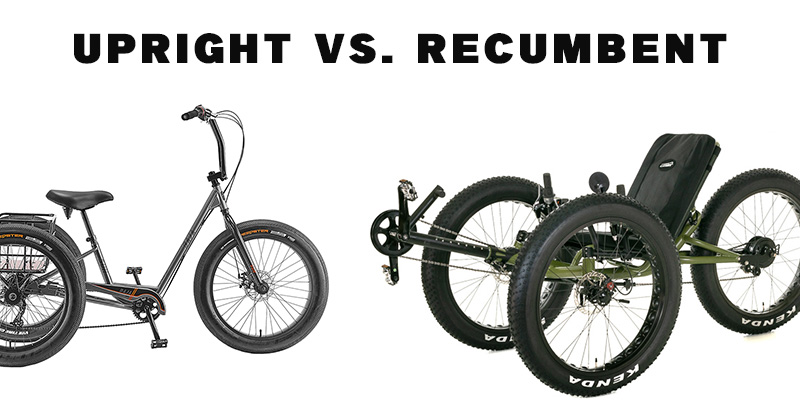
Recumbent vs Upright Bike: Which Is Right for You?
Published on 09/17/2024
Choosing between a recumbent vs upright trike can feel like selecting the right pair of shoes for a specific activity both have their unique fit and purpose. If you're in the market for a trike, understanding these differences can help steer your decision towards the right type.
Recumbent trikes offer a laid-back riding position with full support for your back, appealing to those who prize comfort or have mobility issues. Upright bikes, on the other hand, are familiar and versatile, suitable for a variety of cycling activities from casual rides to vigorous workouts.
In this blog, we'll explore the pros and cons of each trike style, suggest who might prefer one over the other, and discuss how to pick the best model for your needs. At Utah Trikes, we specialize in customizing recumbent trikes, tailored to a growing and diverse group of cycling enthusiasts looking for quality, comfort, and performance.
Recumbent vs Upright Bike: Essential Differences
When choosing between a recumbent vs upright trike, it's crucial to know their distinct design features that affect comfort, performance, and suitability for different users.
Recumbent Trike
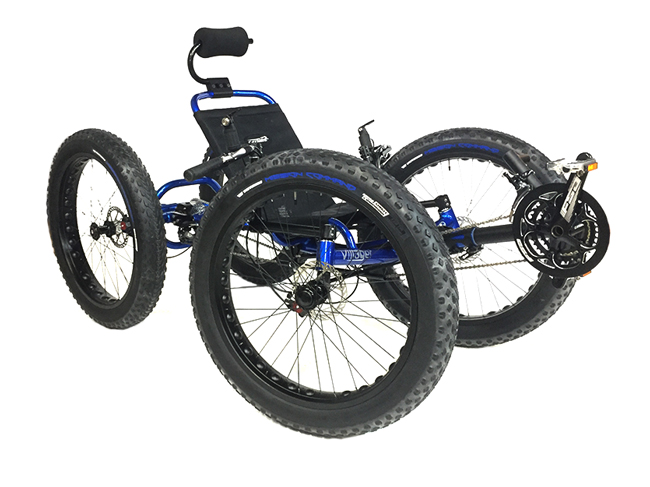
Recumbent trikes offer a unique design that emphasizes comfort without sacrificing the joy of riding. Riders enjoy a reclined seat that mimics the feel of sitting in a chair, which spreads their weight across a larger area, reducing stress on the back and buttocks. This position also means the pedals are in front of the rider, promoting a more natural, horizontal leg movement that many find easier on the joints.
The handlebars on a recumbent trikes may sit at the sides or in front of the rider, minimizing the need for upper body strain as they don't require leaning forward or gripping tightly. This setup suits those with limited upper body strength or flexibility.
Another notable aspect is the frame structure. Recumbent bikes typically have a longer, lower frame, keeping them closer to the ground. This low center of gravity offers better stability and less risk of tipping over. They come in two or three wheel configurations tadpole or delta trikes providing options for those needing extra stability.
Finally, recumbent trikes are more aerodynamic due to their low seating position. This makes them excellent for longer rides as they can reduce wind resistance and improve energy efficiency.
Upright Trike
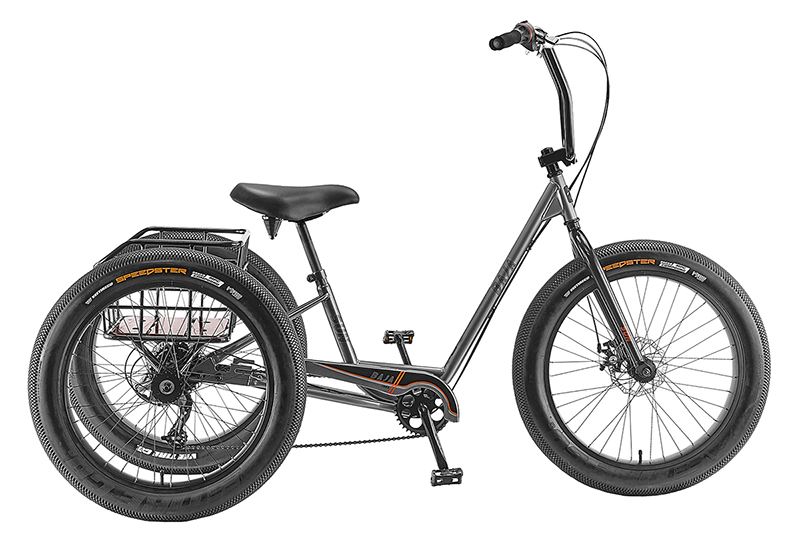
Upright bikes feature a more traditional design that many cyclists grew up using. The seating position is upright, engaging more core and upper body muscles, which can be beneficial for those looking for a workout that challenges these areas.
The pedals on an upright trike are directly beneath the rider, requiring vertical leg movement that mimics walking or running. This position can be more physically demanding but is excellent for building leg strength and endurance.
Handlebars are typically located in front, requiring the rider to lean forward. While this can provide a more aggressive riding posture conducive to speed, it might increase strain on the wrists and shoulders, making it less suitable for long-duration rides or for those with previous injuries.
The frame of an upright trike is higher with a diamond shape, positioning the rider further from the ground, which can make it easier to hop on and off. However, this higher center of gravity means less stability, which might not be ideal for beginners or those uncomfortable with traditional bikes.
In understanding the recumbent vs upright trike differences, riders can make informed decisions that align with their health needs, comfort levels, and cycling goals.
Pros and Cons: Recumbent vs Upright Trike
When deciding between a recumbent vs upright trike, itfs essential to weigh the pros and cons of each to determine which best meets your cycling needs.
Recumbent Trike Pros
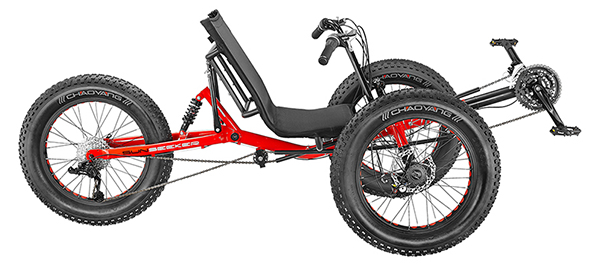
Comfort: Features a reclined seat that spreads the rider's weight, reducing strain on the back and buttocks.
Safety: The lower center of gravity minimizes tipping risks and lessens injury impact.
Aerodynamics: Their streamlined position cuts through the wind, enhancing speed in headwinds.
Health Benefits: Easier on the joints and the reclined position alleviates numbness and male impotence issues.
Inclusivity: Adaptable for riders of various abilities, including modifications like handcycles.
View: Offers an expansive view of surroundings thanks to the laid-back seating.
Recumbent Trike Cons
Visibility: Their low profile can make riders less visible to others, particularly in traffic.
Maneuverability: More cumbersome to navigate, especially in tight spots.
Learning Curve: New users need time to adjust from upright bike habits.
Bulkiness: Their larger size makes them harder to transport and store.
Upright Bike Pros
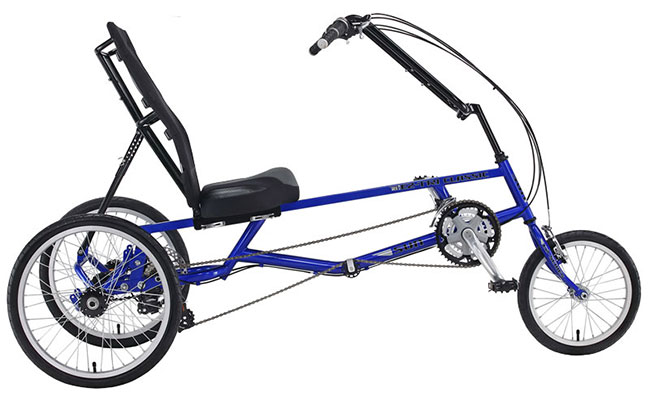
Visibility: Higher seating makes the rider more visible and improves their own view of the road.
Maneuverability: Agile and quick to respond, making it ideal for tight spaces.
Versatility: Excels in various activities like road cycling and commuting.
Availability: More common and widely accepted in cycling communities.
Upright Trike Cons
Comfort: Can lead to discomfort in the back, neck, and wrists on prolonged rides.
Health Risks: Prolonged usage can cause saddle sores and increase numbness risk.
Aerodynamics: Less efficient against wind, which can slow you down.
Injury Risk: The higher center of gravity heightens tipping risks, potentially leading to severe injuries.
Understanding the specific advantages and challenges of each bike type helps in making an informed choice. Whether you lean towards the comfort and safety of a recumbent bike or the versatility and maneuverability of an upright bike, each style supports different rider needs and preferences.
Choosing Your Ride: Recumbent vs Upright Trike
Deciding whether a recumbent or upright bike suits your lifestyle involves considering several factors from comfort to the environments in which you'll be riding.
Assess Your Comfort Needs
Comfort is crucial when selecting a bike. If you frequently experience discomfort in your back, neck, or wrists with traditional bikes, a recumbent might provide the relief you need. Its reclined position distributes weight more evenly, easing pressure on these areas.
Consider Your Cycling Goals
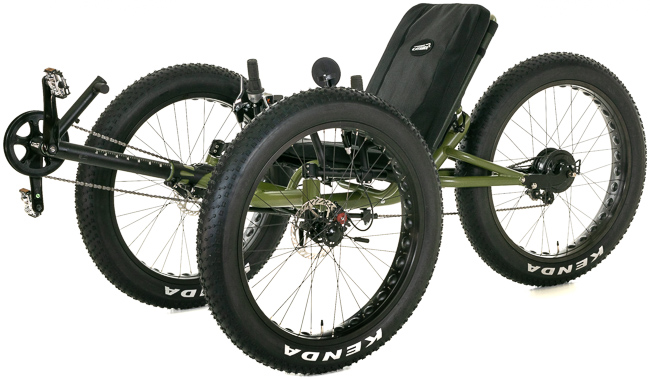
Think about what you aim to achieve with your cycling. Recumbent trikes are stellar for those who prioritize speed and aerodynamics, especially on long rides. Their design cuts through the wind better, potentially improving your performance. If you're after versatility and need a trike that performs well in various settings—whether commuting or mountain biking—an upright trike is likely the better choice.
Evaluate Your Health Conditions
Your physical health is a significant factor. For individuals with joint issues, circulation problems, or concerns about saddle-related health risks, the ergonomic design of a recumbent trike can be beneficial. Its seating helps prevent the numbness and discomfort often associated with traditional bike saddles.
Think About Your Environment
Your regular cycling environment also plays a role in this decision. If you ride mainly in urban settings or places with lots of traffic, the upright trikefs higher seating position offers better visibility and makes you more noticeable to others, which is crucial for safety.
Test Both Types
Finally, the best way to know which bike type is for you is to test both. Spend time riding both a recumbent and an upright bike in various conditions. Notice which one feels more natural, meets your needs and brings you joy. This hands-on experience is invaluable in making your choice.
Choose Utah Trikes
Utah Trikes specializes in recumbent trikes, offering unparalleled customization to meet individual rider needs. From frame modifications to unique builds, our in-shop services ensure each model is perfectly tailored. We are leaders in adaptive cycling solutions, making cycling accessible for all.




